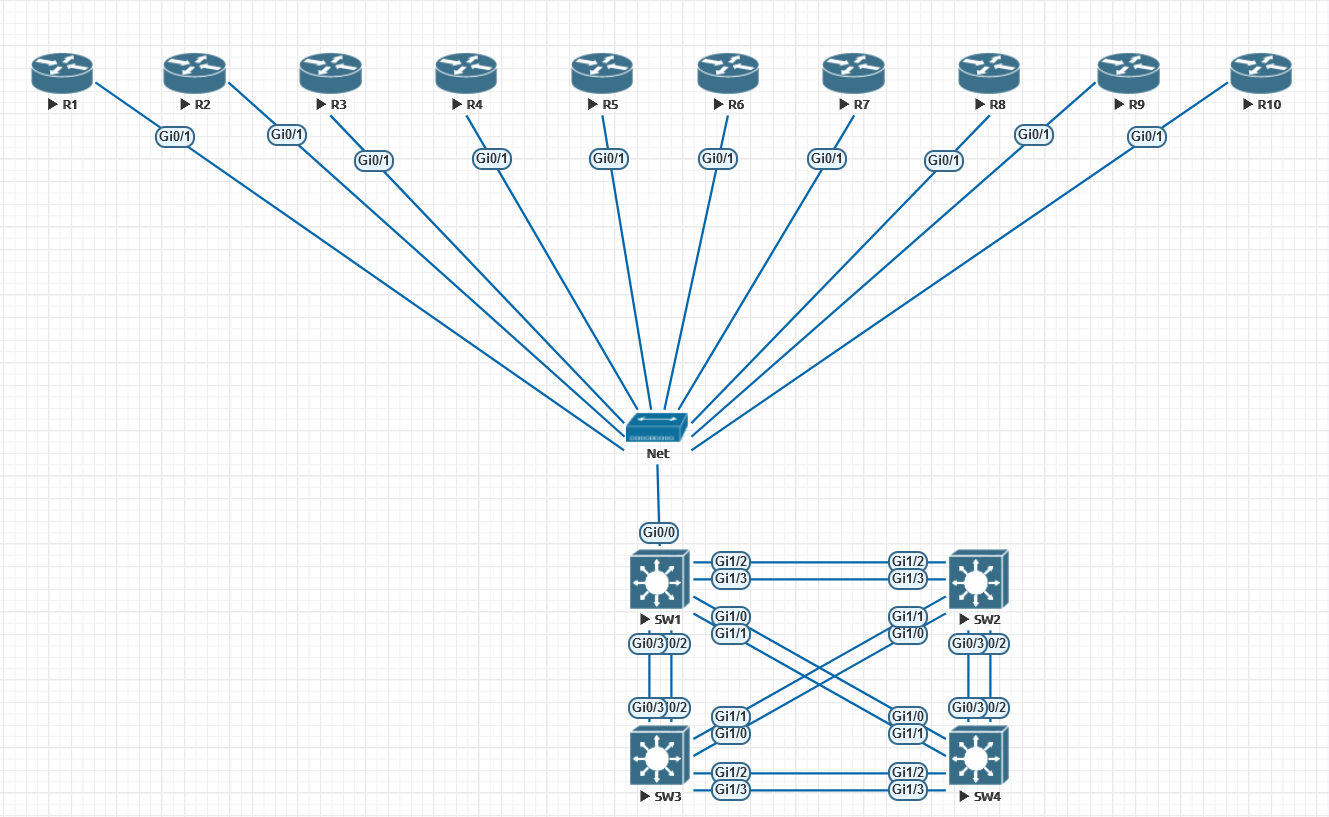
netkillui
-
Posts
252 -
Joined
-
Last visited
Posts posted by netkillui
-
-
19 hours ago, w1z4rd said:
I did manage to get the IOL L2 image to run on GNS3. I run my GNS3 images directly on my Ubuntu host. I guess the way I do it must be very similar to how you would do it when using the GNS3 VM.
When I first tried running the IOL L2 image, it would not run because the image was not an executable. I thus had to `chmod +x` the file.
After that, I managed to add it into GNS3 as an IOL device, with no issues. But when I tried running it, GNS3 threw an error. I think the problem that GNS3 had in the beginning was actually writing the startup-config into the switch's NVRAM (or flash, whatever).
GNS3 just couldn't do it and it threw an error. (I am not exactly sure but, if I remember correctly, the error was something like "GNS3 could not find nvram in the expected location"). Well, I thought, the only reason that GNS3 is looking for the nvram during bootup, to begin with, would be to put the startup-config in there. I knew it wasn't the IOL image that couldn't find its NVRAM, because it was GNS3 that was complaining, not the IOL itself.
So I went to the device's settings in GNS3, and told GNS3 to not use a startup-config. To be sure that the issue had nothing to do with the VM's RAM, I also bumped RAM to 614 MB.
I started the switch, and it worked. It actually boots up pretty fast too.
I later tried 512 MB RAM, and that worked as well.
I tried the L2 IOL because my experience that those ones are a little harder to get to run, and have not yet tested the IOL L3 image.
Are you getting an error message when trying to run the L2 image in GNS3? Can you post the error here? And how much RAM did you give it?
Here's my settings and the error message:

-
3 hours ago, w1z4rd said:
Downloaded the two images.
Installed the L2 image in GNS3 on my Ubuntu laptop. I gave it 640MB or RAM and it worked just fine. My only issue is that GNS3 cannot push a template startup-config. So you have to create the IOL device and do not define a Startup-config.
To get the file to work with GNS3 on Ubuntu, I also renamed the file to give it a .bin extension. Also, you need to give the file executable permissions:
At the end, I got the following:
Thanks a bunch @netkillui!
Tried this on gns3 running with a VM in Windows and on eve-ng. did not work. The L3 image works fine as is.
-
 37
37
-
 4
4
-
 2
2
-
-
- Popular Post
- Popular Post
-
-
- Popular Post
- Popular Post
-
- Popular Post
- Popular Post
-
39 minutes ago, Bishop said:
Instructions on how to configure CML quickly, but I still don't know how to register. Still waiting on anyone who got this working to explain the final registration process.
Hidden ContentChange the ssh port to 1122
cd /etc/ssh/
sudo root
sudo nano sshd_configRemove hash and edit port #1122 (port 22 is in use)
Ctrl+x: To save the changes and exit editing.
Ctrl+o: To save the changes and keep editingRestart ssh service
sudo systemctl stop ssh
sudo systemctl restart ssh ( you must restart every time you reboot unless you configure it to start on startup. I didn't bother because I couldn't get it to register.
sudo service ssh status (look for errors and fix)Then upload the libsmartunified.so to /tmp folder using winSCP or filezilla
In Console
cd /tmp
sudo cp libsmartunified.so /var/local/virl2/.local/lib/smart/
(recheck directory after you copy it over and check to see if the date is current)
type: sudo -E -s
type: rebootlogin with web ui go to Tools > system administration > Telementry disable
login with web ui go to Tools > system administration > licecing (goto bottom of page to see your UID its also in the middle but if you want it fast you can go straight to the end.Copy your UDI then insert your UDI to the license.txt file
Go to licensing > SLR license > generate token > upload the licensefile txt contents.
-
 2
2
-
-
Narbik and INE
-
 3
3
-
-
- Popular Post
-
18 hours ago, invincible2k said:
@azzz thanks for sharing, much appreciated, but i am not sure how to co correlate below topology with INE ATC training and Workbook, and initial configuration is also missing
you can get the base config from INE's github
-
 16
16
-
 4
4
-
 1
1
-
-
- Popular Post
- Popular Post
-
- Popular Post
- Popular Post
-
- Popular Post
- Popular Post
-
- Popular Post
- Popular Post
-
1 minute ago, Rita123 said:
Dear all,
I have DNA controller and I already scanned for the devices in the network. The issue I am facing is that I need to provision and automate these devices but I cannot as I am afraid that DNA will overwrite the devices configuration. I need basically the steps to re-deploy DNA in brownfield setup where I can provision and automate device configuration by using a template without overwriting the current configurations. Any help is very much appreciated?
Thanx
work with TAC.
-
 1
1
-
-
-
On 12/20/2023 at 6:13 AM, wyleeb said:
@netkillui what is the password for the zip file?
123
-
- Popular Post
-
-
- Popular Post
- Popular Post
-
- Popular Post
-
- Popular Post
-
11 hours ago, StudentDude said:
Hi Guys
anyone has the below sd-wan course fron NJ
Hidden Content
- Give reaction or reply to this topic to see the hidden content.
It is bad. look for CBTnuggets or Kbits SD-WAn if you want to learn it.
-
Disable uksm in eve / gns3 for faster and stable boot of nexus, ISE, or cat9k. Takes more ram though




[OFFER] IOL images from CML 2.7
in CCIE Enterprise Infrastructure
Posted · Edited by netkillui
1. remove xml.cisco.com entry from /etc/hosts file
2. run this command "iptables -I OUTPUT -p udp --dport 53 -m string --hex-string "|03|xml|05|cisco|03|com" --algo bm -j DROP"
3. Try IOL2 image again.